With the newly released supplement for Black Powder Epic Battles: Waterloo, The Hundred Days, now in stores, we asked the book’s author, Adrian McWalter, to give us the lowdown. Adrian is no stranger to Napoleonic Black Powder, having previously penned Albion Triumphant, Volumes One & Two and A Clash of Eagles.

Adrian: As soon as Warlord Games released their Epic Battles: Waterloo range, I instantly bought a British and a French starter set intent on reworking the models to create the Netherlands 2nd & 3rd Infantry Divisions and the Netherlands Cavalry Division (we’ll feature these in a future article -ed.). I also saw the release as an opportunity to get a few of my long-time Warhammer gaming buddies into the joy of Napoleonic wargaming via the Black Powder ruleset.
I decided to design several scenarios that would ease my friends gently into my tabletop Black Powder world. As the miniature range is firmly set against the backdrop of the Waterloo campaign, my scenarios were very much centred around this very period. and that’s when it clicked. I thought to myself, ‘if I’m creating scenarios for Black Powder, why not base them firmly on the Waterloo campaign?’ That idea grew, and before I knew it, I was writing an entire campaign supplement to complement the figure range and the Black Powder Epic Battles rules.
Scenarios
I saw the supplement as a fantastic opportunity to design a number of scenarios that highlight the campaign in all its glory; of course, this includes games that revolve around that most famous of days in June 1815, but also actions both before and after that day.
When planning out the book, I decided that there were some must-have scenarios, such as Quatre Bras and Ligny. Even though these battles are well known and had been covered in wargaming numerous times, it would be remiss of me to leave them out – especially for anyone new to the period – though they would have to be a little different if I were to cover them to make them stand out. One way of doing this was to add special rules to each of them; for example, the battle for Ligny has been broken down into three scenarios: The Battle of Ligny – St Armand (Scenario 4), The Battle for Ligny (Scenario 5), and The Attack of the Imperial Guard (Scenario 6). Each scenario has rules that complement Black Powder and make each game unique. For example, the Battle for Ligny has three unique special rules; ‘No quarter asked or given’ (all infantry count as Tough Fighters), En Avant (French infantry count as Valiant) and Cornfields (representative of the ground in front of Ligny). The Attack of the Imperial Guard has a completely different feel thanks to the special rule ‘Prussian Losses’ (each Prussian infantry unit might be placed on the table with a number of Casualty Makers). Each scenario thus has a distinct flavour.
One of the overarching themes of the battles of The Waterloo Campaign is that many took place within built-up areas; as a result, I decided that the first scenario (The Action at Thuin) would play heavily into this. This relatively small-scale clash between the French and Prussians on 15th June is a great way to ease gamers into playing with some of the more advanced rules that reoccur throughout the book.
I also wanted to highlight the contribution of other nations to the Anglo-Allied victory during the Hundred Days campaign. Quatre Bras would demonstrate this via the significant deployment of Dutch & Belgian troops at that action. Other actions that highlight the greater Allied effort include Papelotte, Plancenoit and La Haye Sainte. As before, these fall into the well-known scenarios bracket, so they have special rules applied. Over and above that, other actions underlined the significant contribution that the Prussian army made to the defeat of Napoleon Bonaparte. As a result, ten out of the eighteen historical scenarios involve Prussian forces.
I didn’t want to omit the numerous clashes that occurred following the Battle of Waterloo, where the Prussians pressed the defeated French army as it retreated toward Paris such as The Action at La Falize (Scenario 16), so a number of the latter scenarios are devoted to this.
Ladder Campaign
I’ve presented rules to join all 18 historical scenarios together in a grand ‘ladder’ campaign, where the outcome of one game influences a future one. This lends greater weight to the outcome of each game as victories will often confer bonuses to the troops. This system lends greater meaning to playing the scenario games in chronological order, and I’m keen to see people having a crack at doing just that.
What If?
During any military conflict, there are always opportunities missed, and the Hundred Days campaign is no exception. One can only imagine what would have occurred if d’Erlon’s I Corps had made its presence felt at the Battle of Quatre Bras or Ligny. Therefore, I thought it would be a good idea to present these as ‘what if?’ scenarios; could the French win the battle of Quatre Bras or destroy the Prussian army at Ligny with the fresh troops available to them?
Pick-up Games
Many gamers can only game on club nights where they have but a couple of hours to set up and play; such occasions do not always lend themselves to scenario-based games. Therefore, I decided to include a Pick-up Games section that provides information on how my gaming group tackled the issue. This briefly details how you can quickly and easily set up a balanced game where the objectives are clearly set out, and easily sneak a game into an evening.
Orders of Battle
Finally, I have included details of the orders of battle for each participating army. These identify every unit that took an active part in the Hundred Days Campaign, and present key information such as the unit’s commander, the type of unit and the unit’s size. This section is fairly extensive, and provides guidance for recreating any historical battle of the campaign, or with the included points system is also perfect for those who like playing ‘balanced’ games.
When I wrote out the synopsis for the supplement, I planned on writing 132 pages, but with the inclusion of the orders of battle we ended up with a 208-page book; I think perhaps I got a bit carried away…
Start Collecting
The three starter army boxed sets for Epic Battles: Waterloo will set you well on the way to staging the battles of the Hundred Days in Epic Battles scale. Each starter set contains a bespoke A5 softback rulebook, assembly and painting guides, the appropriate flag sheets, an MDF scenery piece and dice. That’s not to mention the models!
Wellington’s British Army
- 10 Units of Line Infantry
- 3 Units of 95th Rifles
- 1 Unit of Heavy Dragoons
- 1 Unit of Scots Greys
- 1 Unit of Household Cavalry
- 1 Unit of Hussars
- 1 Unit of Light Dragoons
- 16 Artillery Pieces
- 9 Mounted Brigade Commanders
Napoleon’s French Army
- 10 Units of Line Infantry
- 3 Units of Skirmishing Voltigeurs
- 1 Unit of Cuirassiers
- 1 Unit of Dragoons
- 1 Unit of Carabiniers
- 1 Unit of Hussars
- 1 Unit of Chasseurs a Cheval
- 1 Unit of Lancers
- 16 Artillery Pieces
- 9 Mounted Brigade Commanders
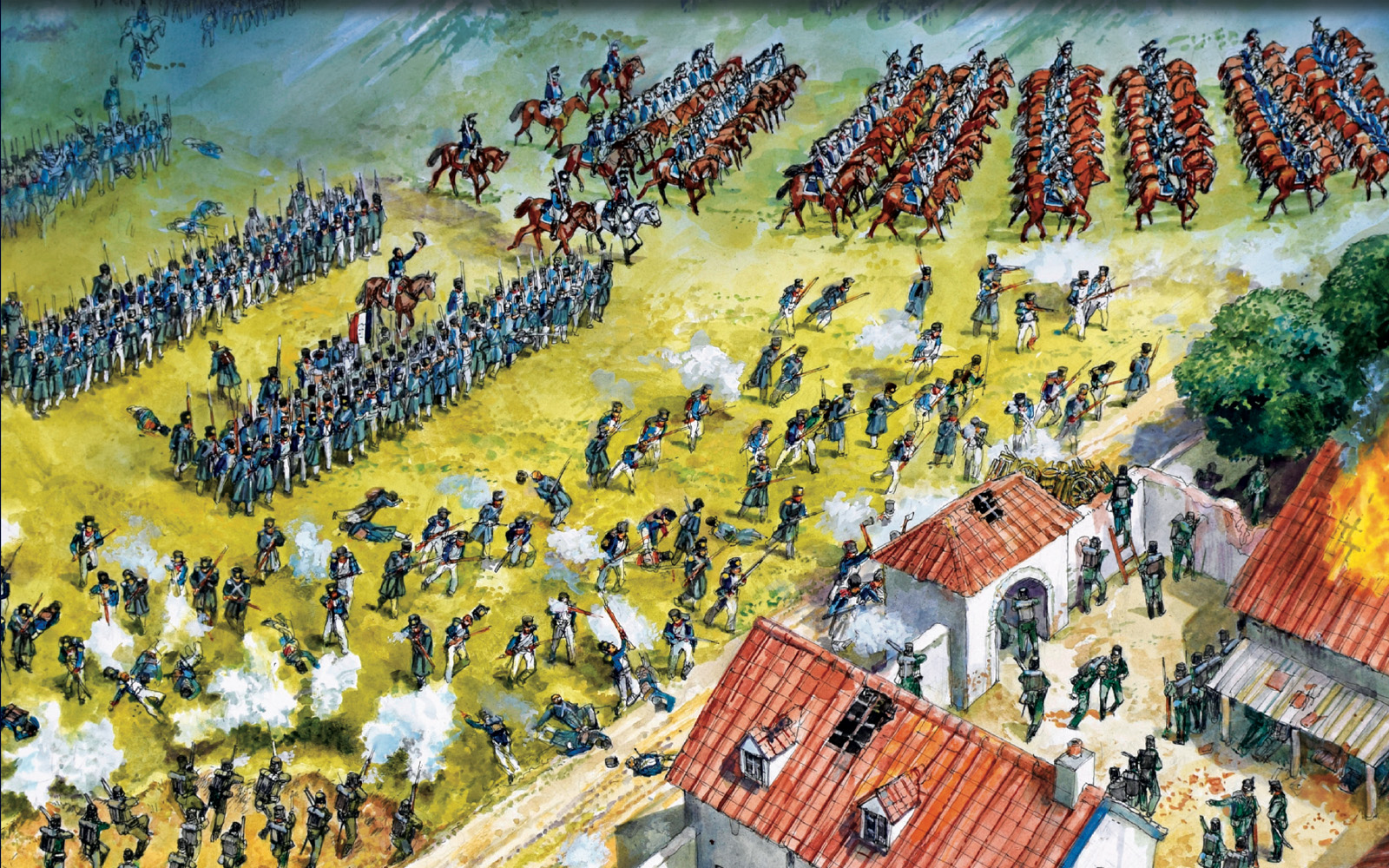
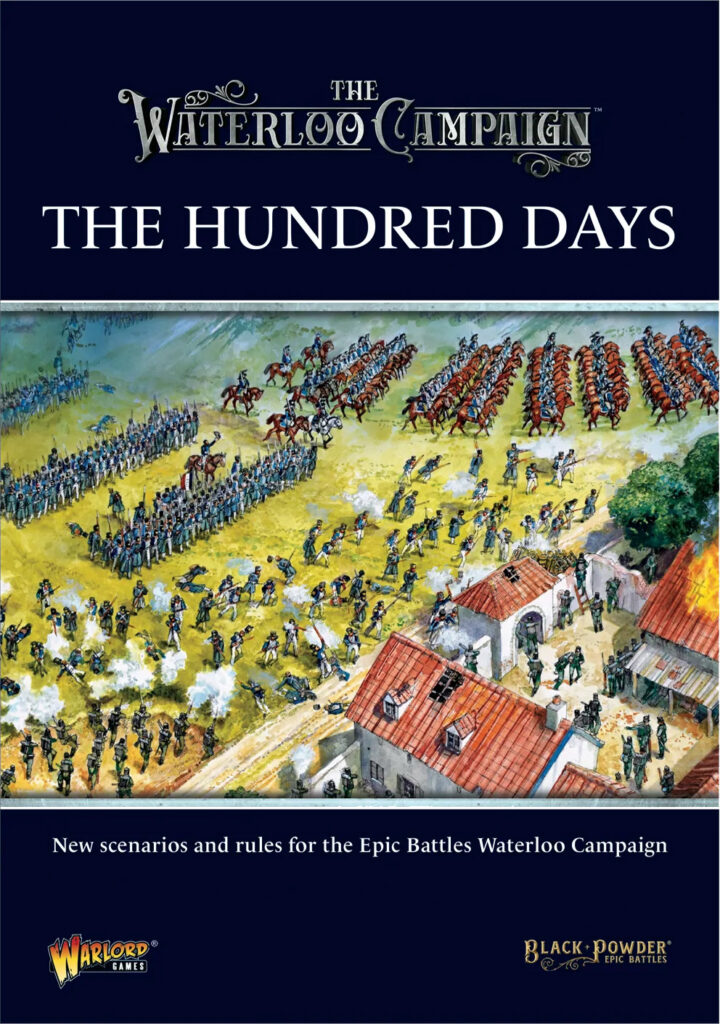
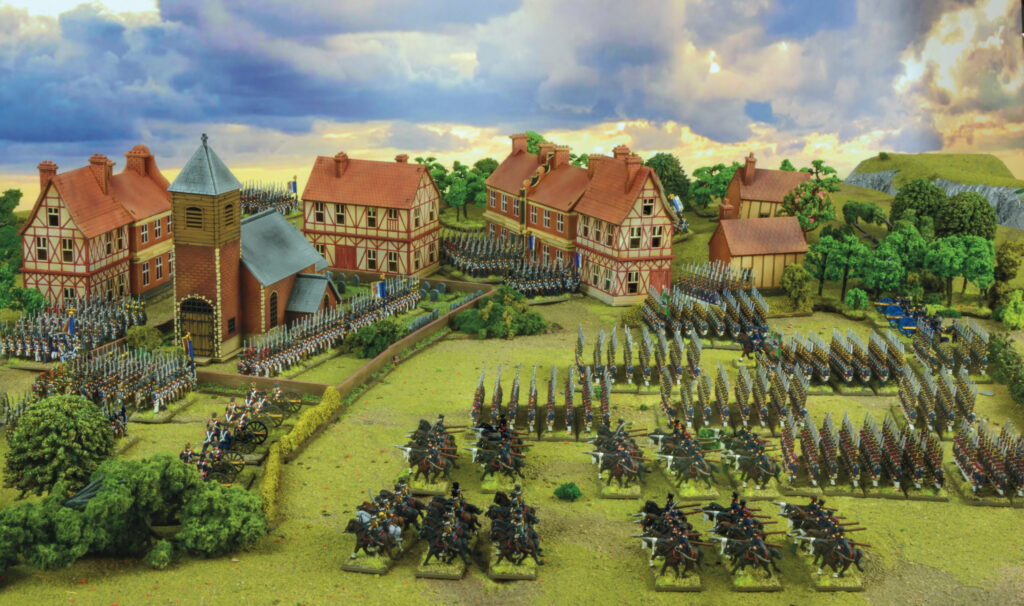
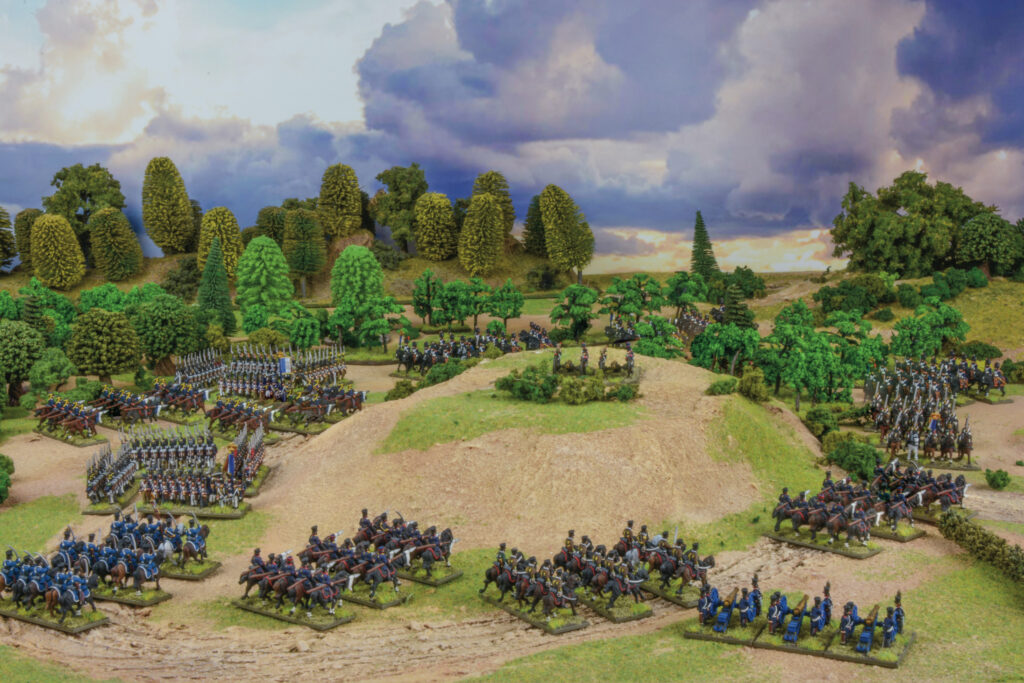
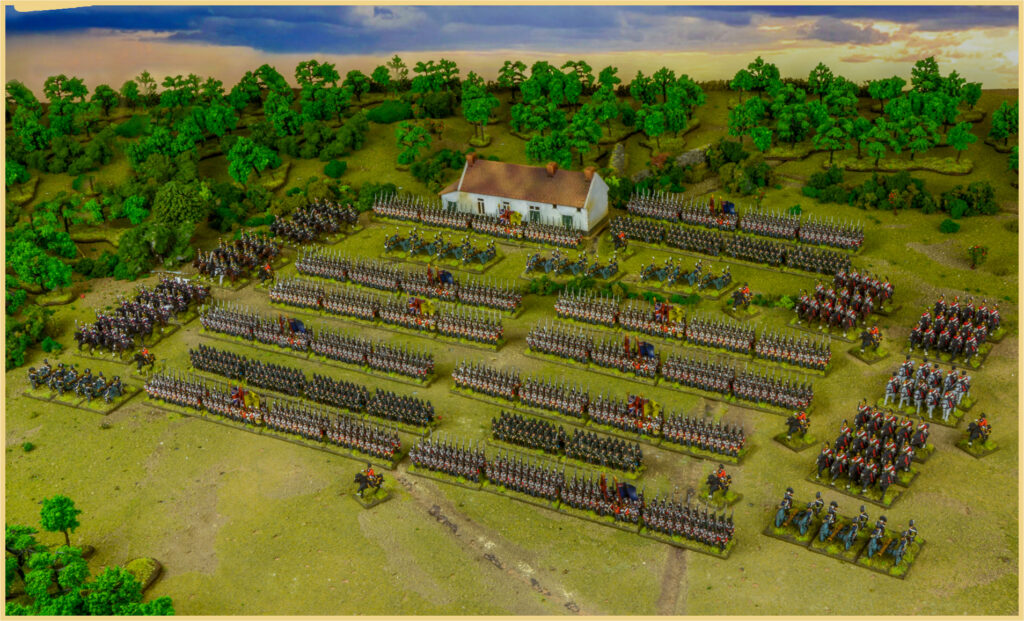
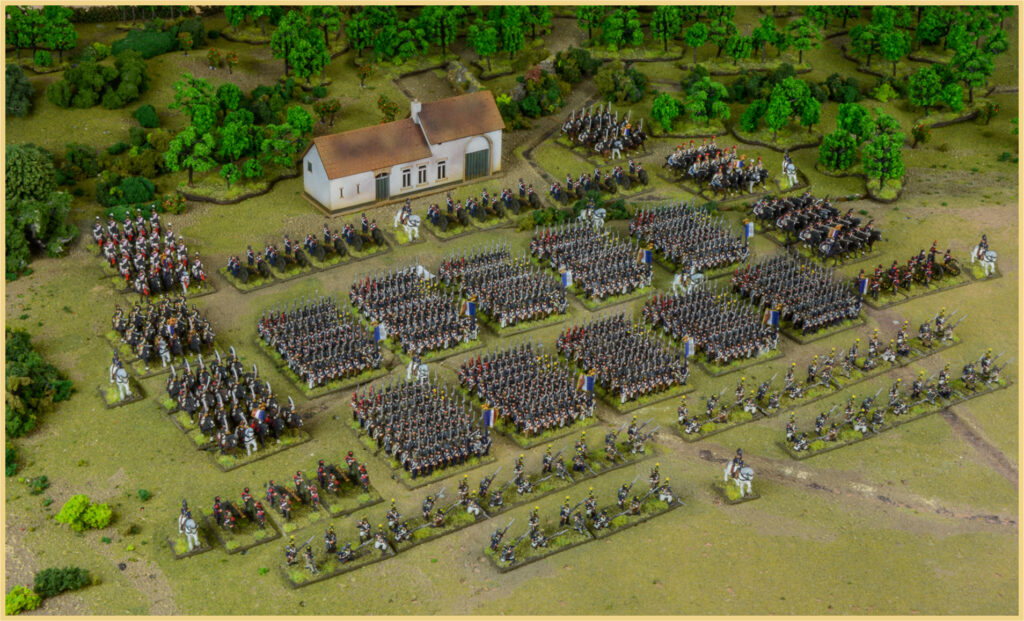
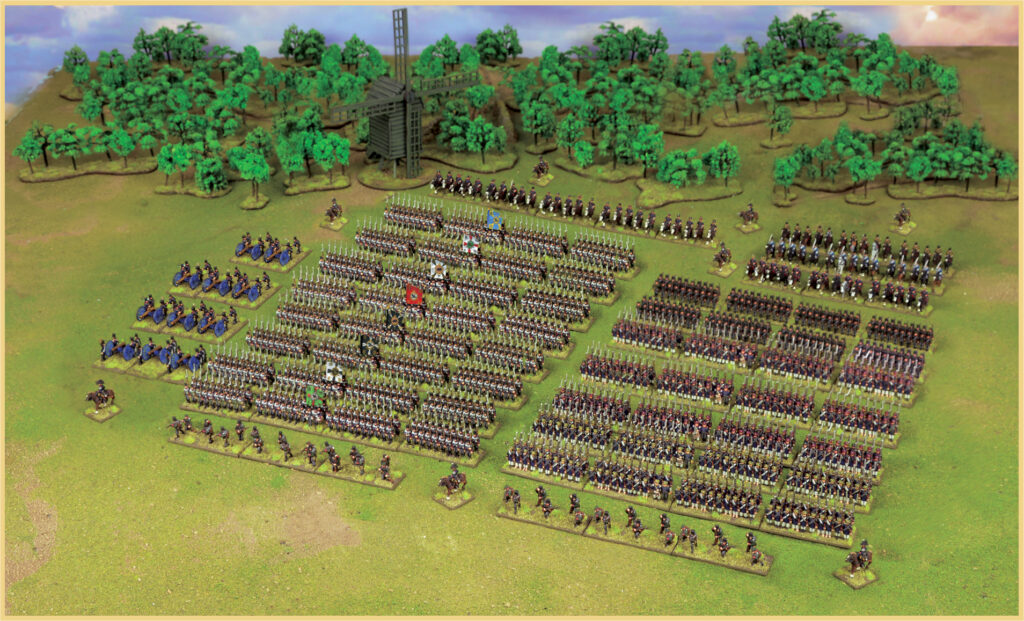
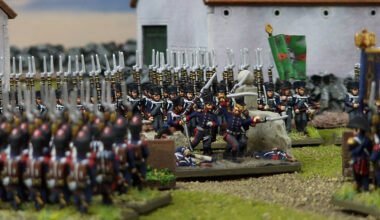
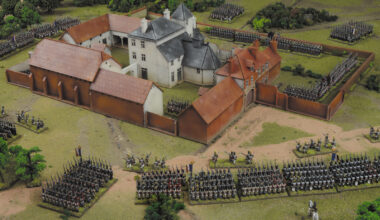
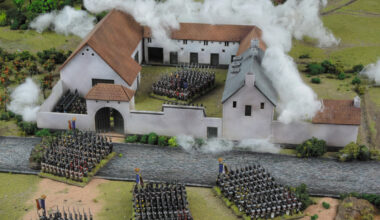
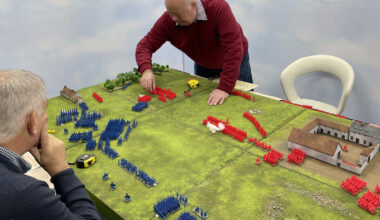
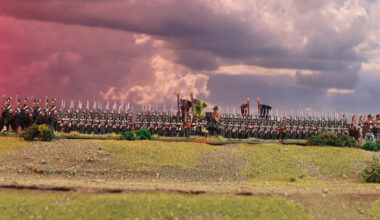
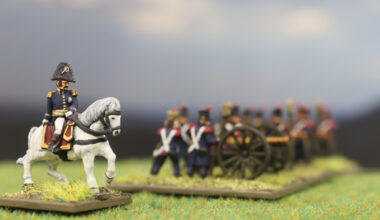
2 comments
Dare I ask, will there be another epic topic such as the 1805 Campaign with appropriate Russian and Austrian armies?
I have found that small scenarios can be put together for a 4 x 6 table without too much difficulty. (We cut all unit sizes in half using two stands for infantry, two for cavalry and one for small units. We also use centimeters for movement.) I ran an Albuera expy for 6 players featuring 5 and 6 brigades respectively – 18 British, Portuguese and Spanish battalion/regiments vs 14 French. Complete with troop quality factored in and special rules used. We were done in about 2 1/2 hours easy. (Allies won but it was a close fight.) The funny thing is that while none of the players recognized the Albuera battlefield, the French player’s attack mirrored Soult’s attack plan pretty closely and Zayas’ Spanish troops replicated their excellent stand. Very good game system and we love having lots of troops on the board.
Comments are closed.